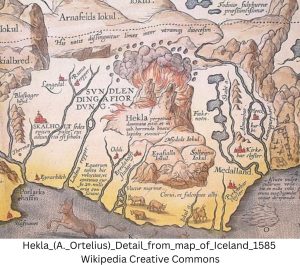Volcanoes, Iceland and Climate
Magma-induced earthquakes began in southwest Iceland in late October, peaking last week before recently waning. As a surface expression of the Mid-Atlantic Ridge, the island nation is no stranger to volcanic activity.
At least three major eruptions over the last 3,000 years were large enough to significantly impact global climate. Each of these three led to blockage of sunlight, lowering of temperature, decline in agricultural productivity and worldwide famine.
Two of these three major eruptions are attributed to Hekla. Hekla is the most active volcano on Iceland, having erupted more than 30 times over the last 1,100 years. The first big eruption noted by historians occurred in 1150 B.C. during a period of cold known as the Greek Dark Ages. Hekla’s eruption probably intensified the already grim cold and famine for as much as five years.
For the citizens of Iceland, even in the best of times life was harsh and sometimes brutal. Adding to Icelandic challenges during the Little Ice Age were several major volcanic eruptions that destroyed large areas of land. These included Hekla in A.D. 1104, just prior to the extended chill.
The 245-day eruption of Lakikagar began in 1783. It is estimated that as much as 50% of the population of Iceland perished from the combination of climatic and volcanic calamities. The conditions were so dire that Danish authorities who ruled Iceland considered for a time abandoning the island nation.
The above material was drawn from A Very Convenient Warming – How Modest Warming and More CO2 are Benefiting Humanity. The book is available now for pre-publication orders, shipping soon.

The above material was drawn from A Very Convenient Warming – How Modest Warming and More CO2 are Benefiting Humanity.
Like the information you see here?
